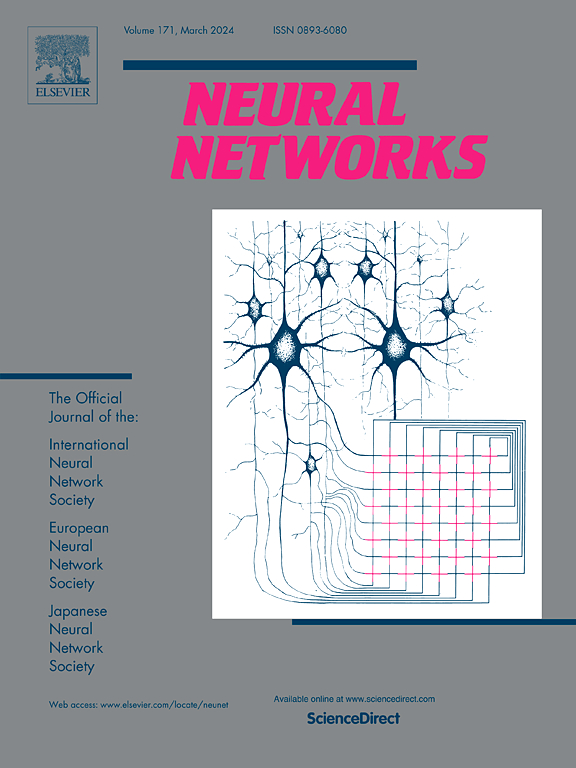Intracortical functional connectivity during deep sleep reveals prosocial preferences
IF 6.3
1区 计算机科学
Q1 COMPUTER SCIENCE, ARTIFICIAL INTELLIGENCE
引用次数: 0
Abstract
Prosociality is crucial for cohesive community functioning. Recently, we found that increased slow-wave activity during deep sleep in the right temporoparietal junction (TPJ), a key component of the social brain, is associated with stronger prosocial preferences. Building on this finding, we here investigate connectivity between the right TPJ and other regions of the social brain as a marker of inter-individual differences in prosocial preferences. Using whole-night high-density sleep electroencephalography (EEG) recordings from 54 participants (mean age = 21.5 ± 2 years; 28 females), we employed source localization to derive intracortical EEG functional connectivity during deep sleep in the slow-wave frequency range (0.8 to 4.6 Hz). We correlated connectivity between the right TPJ and 23 other key social brain regions with prosocial preferences, assessed in an incentivized public goods game with real monetary consequences. Our results revealed a negative correlation between prosocial preferences and connectivity for 22 of the 23 analyzed connections. Six of these connections demonstrated a significant negative correlation with prosocial preferences after adjusting for multiple testing (-0.36 ≤ rho ≤ -0.30; 0.006 ≤ p ≤ 0.038), indicating lower functional connectivity of the right TPJ with other social brain regions during deep sleep in individuals with stronger prosocial preferences. These results suggest that the benefits of deep sleep for prosocial decision-making may be enhanced when the right TPJ reduces its interactions within the social brain during this sleep stage.
深度睡眠期间的皮质内功能连接揭示了亲社会偏好
亲社会性对于有凝聚力的社区功能至关重要。最近,我们发现,在深度睡眠期间,右颞顶交界处(TPJ)的慢波活动增加,这是社会性大脑的一个关键组成部分,与更强的亲社会偏好有关。在此基础上,我们研究了右TPJ与社会脑其他区域之间的连通性,作为个体间亲社会偏好差异的标志。使用54名参与者(平均年龄21.5±2岁;28名女性),我们采用源定位来获得慢波频率范围(0.8至4.6 Hz)深度睡眠时皮质内脑电功能连接。我们将右TPJ与亲社会偏好的其他23个关键社会脑区域之间的连通性联系起来,在一个有实际金钱后果的激励公共物品游戏中进行评估。我们的研究结果显示,在分析的23个连接中,亲社会偏好和22个连接之间存在负相关。经多次检验调整后,其中6个连接与亲社会偏好呈显著负相关(-0.36≤rho≤-0.30;0.006≤p≤0.038),表明亲社会倾向较强的个体在深度睡眠时右侧TPJ与其他社会脑区功能连通性较低。这些结果表明,当右TPJ在这个睡眠阶段减少其在社会脑内的相互作用时,深度睡眠对亲社会决策的好处可能会增强。
本文章由计算机程序翻译,如有差异,请以英文原文为准。
求助全文
约1分钟内获得全文
求助全文
来源期刊

Neural Networks
工程技术-计算机:人工智能
CiteScore
13.90
自引率
7.70%
发文量
425
审稿时长
67 days
期刊介绍:
Neural Networks is a platform that aims to foster an international community of scholars and practitioners interested in neural networks, deep learning, and other approaches to artificial intelligence and machine learning. Our journal invites submissions covering various aspects of neural networks research, from computational neuroscience and cognitive modeling to mathematical analyses and engineering applications. By providing a forum for interdisciplinary discussions between biology and technology, we aim to encourage the development of biologically-inspired artificial intelligence.
 求助内容:
求助内容: 应助结果提醒方式:
应助结果提醒方式:


